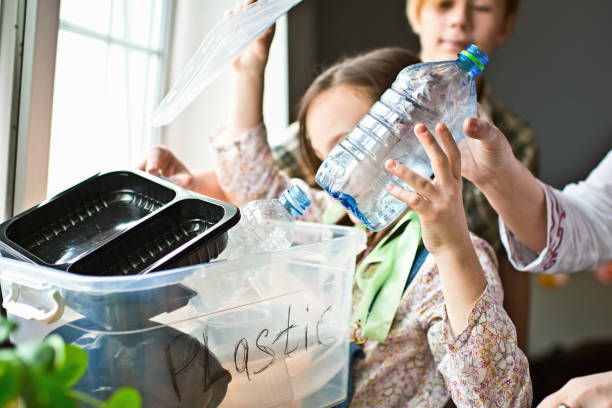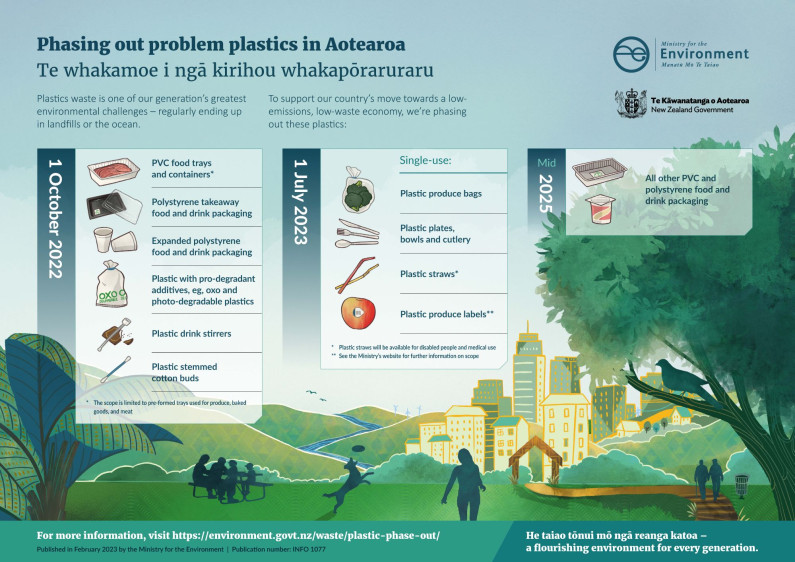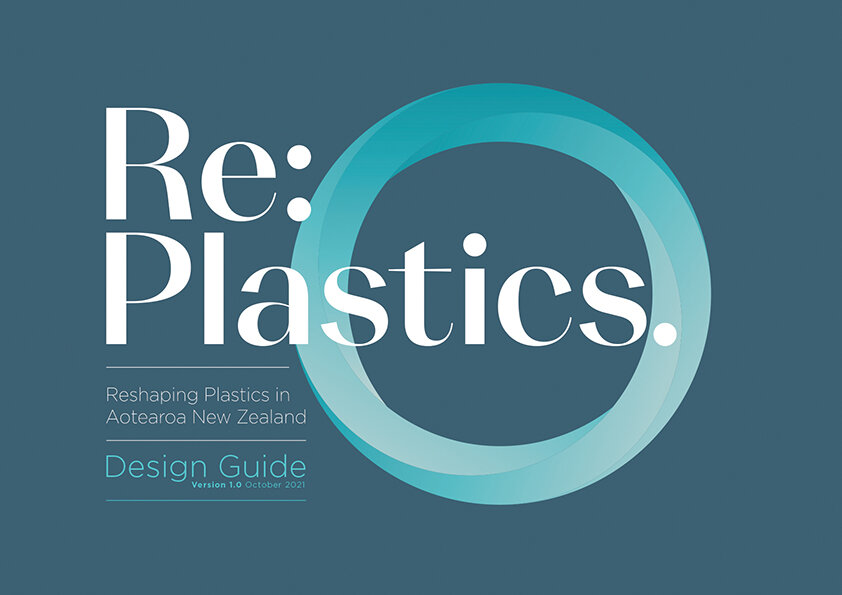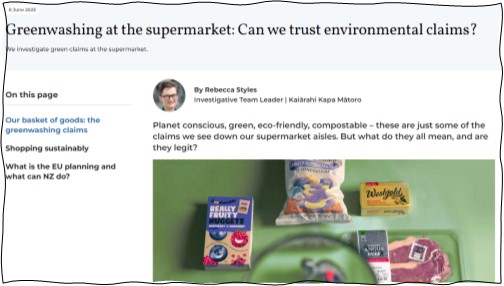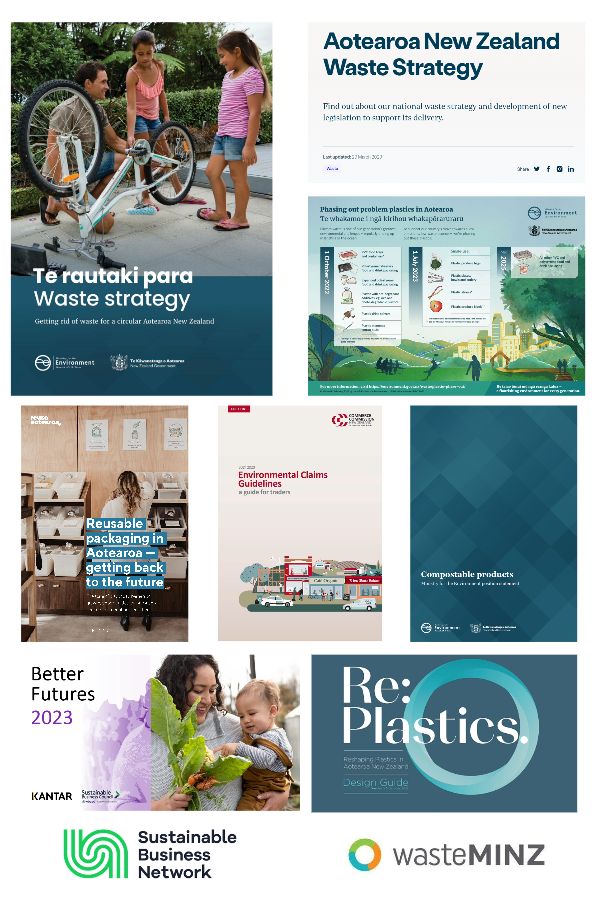The banning and phasing out of single use plastic bags back in 2019 by the New Zealand Government not only marked a turning point, but also triggered a significant shift in awareness regarding packaging materials and their role in our communities.
Since single use plastic phase out began, there has been a concerted effort to phase out other problematic packaging. This in turn has lead to a transition towards alternative solutions. For instance, as of October 2022, products such as PVC and Polystyrene Food Packaging can no longer be used or supplied. In July of this year, Plastic Produce Bags and Straws joined the list of phased-out items.
So, what do all these phase-outs signify? Well, in our perspective, they represent an opportunity. An opportunity to gain a deeper understanding of the challenges posed by these materials, and to reevaluate and redesign our approach to packaging.
According to the Ministry for the Environment, one of the primary motivations behind these changes is that “Hard-to-recycle packaging and products can interfere with our recycling systems and are often used only once before being disposed of.”
Here at Hi-Tech Packaging, we share this perspective. During a recent visit to Auckland’s largest recycling plant, it became evident why some of the products being phased out present significant challenges in recycling streams. To achieve effective recycling, high-quality materials must be used. Not to mention, the materials currently being phased out create obstacles for recyclers in processing them into valuable products.
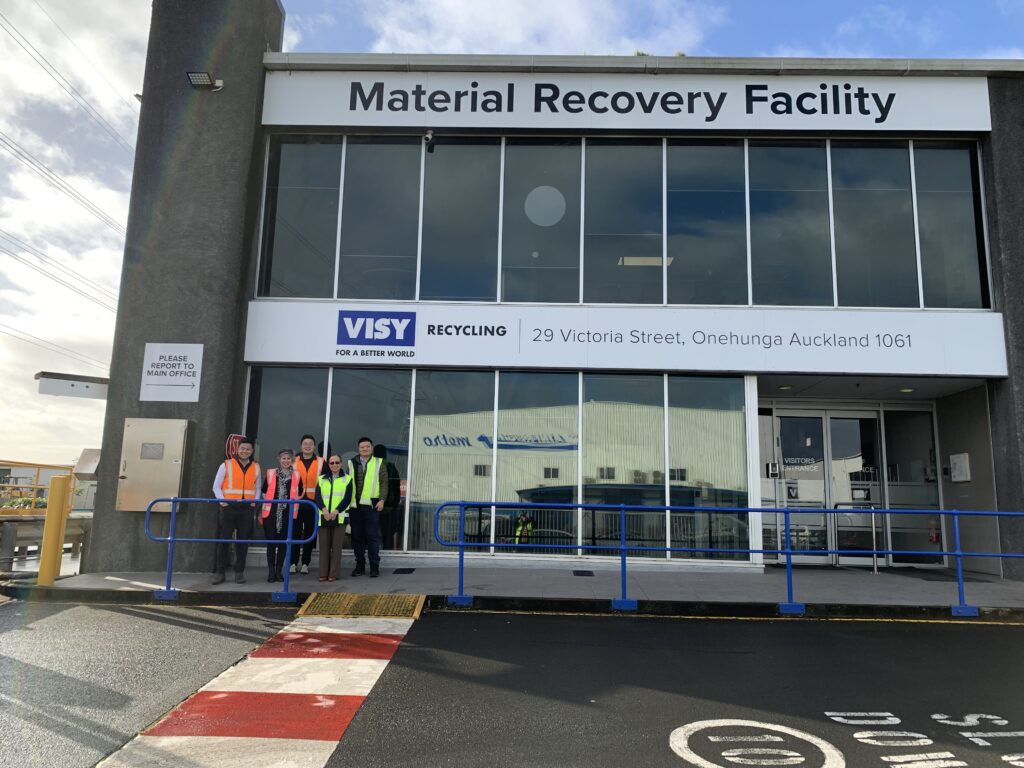
Another key reason, as stated by the Ministry for the Environment, is alignment with “a wider ambition to move Aotearoa New Zealand towards a low-emissions, low-waste economy.” In simpler terms, we need to take steps to reduce our environmental impact!
So, how can you do this effectively?
Firstly – Understand your current materials
It’s crucial to understand the packaging materials you currently use. While this may seem like common sense (and it is), it’s a step that is sometimes overlooked. If you’re uncertain about your packaging materials, our friends at Plastics NZ offer a helpful guide below.
Secondly – Start at the top of the Waste Hierarchy
The Waste Hierarchy creates a simple framework when contemplating a redesign of your packaging, it’s tempting to start at the “pointy-end” of the Waste Hierarchy. However, the most substantial impact you can make starts at the top.
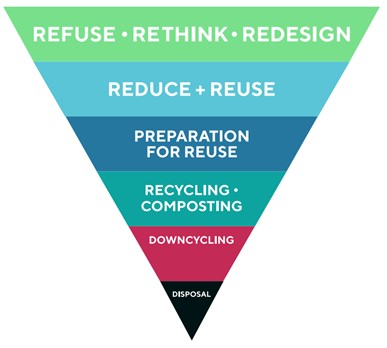
Finally – Don’t be afraid to learn and collaborate
Collaboration and learning are key if you want to make positive changes to your packaging. We believe one of the most valuable actions you can take is to collaborate and learn from others.
What do we mean?
Well, it is easy to create “unintentional consequences” when changing your packaging, despite having good intentions. Consumer NZ emphasizes collaboration and learning, stating that “we needed knowledge of packaging and waste disposal in Aotearoa, as well as knowledge of product standards and certifications. Plus, we needed plenty of time to talk to manufacturers and experts about environmental claims.”
For us, having partners like the Sustainable Business Network, WasteMINZ, and Plastics NZ enables us to gain a deeper understanding of how packaging materials impact broader systems. This knowledge ultimately helps us to make more informed decisions for our customers and the markets we serve.
In conclusion, significant changes are occurring in the packaging industry, and we view this as an opportunity to better comprehend the role we play and how packaging plays across brands, consumers, and infrastructures. The more we understand these elements, the better chance we have of reducing our impact and avoiding unintended consequences such as greenwashing.

